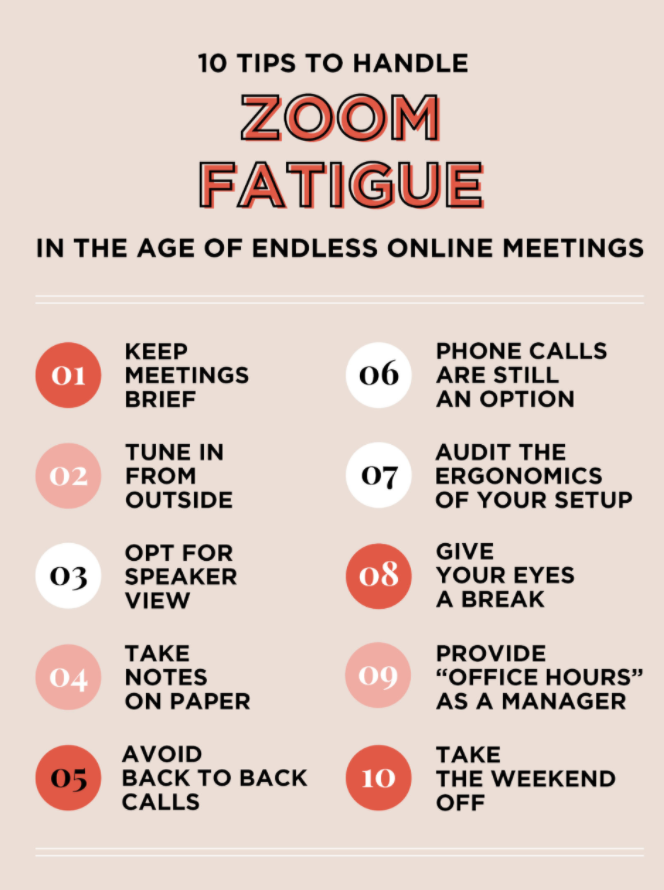Tech Fatigue and How To Avoid It

Technology has been one of the more important factors for the past year being functional and effective despite many restrictions to our lives and businesses. The mere fact that we have so many options for connectivity other than the physical is a testament to this point in history. Working Americans have become more accepting of the incorporation of technology as part of their regular working routine. Most demographic groups have found that tech is critical to their ability to succeed throughout the pandemic, and this bridges age, socioeconomic status, or education for the first time in history (Pew Research Center).
Still, most of us would probably agree that we are fatigued using technology. In fact, in the same Pew study, all demographic groups agree that technology cannot ever make up for in-person communication. We continue to see tech as a good alternative but not an ultimate solution. But what is tech fatigue and how can we avoid it in the months ahead?
Tech fatigue, like any other form of induced fatigue, is physical and mental strain brought on by the overuse of technology-specific resources. It impacts our mental and emotional health, creates hostility toward the mediums use, and ultimately dissuades the positive impact of tech.
There are two main types of tech fatigue to focus on: the physical, or fatigue that is created physiologically, and the dreaded Zoom fatigue which has become a blanket term for COVID-related tech incorporation.
Physical Fatigue
Fatigue brought on by technology devices including computers and phones is essentially an impact on our body’s circadian rhythm. This is how our brain manages how attentive we are when we are awake, it allows for the buildup of melatonin when it is time for sleep, and ultimately regulates daily functions that can impact our mood. Circadian rhythm is most notably controlled by light. Natural light from the sun and even artificial light from internal sources help to balance this rhythm throughout the day. But tech devices release blue light which has a shorter wavelength than any other form of light. When we take in this light over a greater period, our circadian rhythm naturally speeds up. Ultimately, melatonin function is impacted, sleep is disrupted, and long-term fatigue sets in. The greater amount of time spent in front of these blue light-emitting devices, the greater the impact on our mental state.
Zoom Fatigue
At the end of 2019, 10 million people regularly used Zoom as an interpersonal communication method. By April 2020, that number was 300 million (Schiopu et. at). This and other similar mediums have made it possible to maintain relative working productivity while adhering to pandemic-related restrictions. But this too is fatiguing and not just because of the amount of time most spend in virtual meetings, but in ways not immediately obvious.
We communicate in very specific ways which scientists call “synchrony”. This is how we hear, understand, and respond to communication. Virtual meetings are plagued with slow processing and regular data interruptions. This means that it takes more energy for us to understand and respond to someone in this medium. The greater disruption to communication, the more our brain works to overcome the issues with synchrony.
We also take a tremendous amount of communication signals from body language. Another issue with virtual meetings is that it typically only frames the face. While seeing someone’s face is better than not, we miss the subconscious physical cues which our brain uses as part of our communication comprehension. So, again, the more our brain tries to compensate, the more fatigued we become.
Overcoming Tech Fatigue
One of the best ways to overcome tech fatigue is simply to limit its use. Going back to the transmission of blue light, the less blue light, the better. Now, most of us cannot just turn off our devices especially during this time. But setting limits throughout the day and especially in the evening is crucial. We have also seen a rise in blue light blocking eyewear which can be worn by anyone to limit the exposure to this light. Think of this as the use of sunscreen when outside for a prolonged period.
To help cut down on virtual meeting-related fatigue, think about regularly changing up your communication tools. Perhaps a phone call can take the place of a video meeting. When at video conferences, try to ensure that you are heard and seen. Make sure your face is well-lit and your computer connection is optimal. This can be done by closing any programs that might be using up web speed such as an internet or chat browsers.

Most of all, take time to shut out tech. When you go outside, leave the phone behind. When you are on the phone for a call, walk away from the computer screen.
We can continue to be grateful for the ability to stay connected to one another. But we should continue to acknowledge the impact that this has on our natural functions.
by Seth Barnett, VP Content Development
Philadelphia, PA 19107
 © 2025 AIM Smarter, LLC. All Rights Reserved.
© 2025 AIM Smarter, LLC. All Rights Reserved.